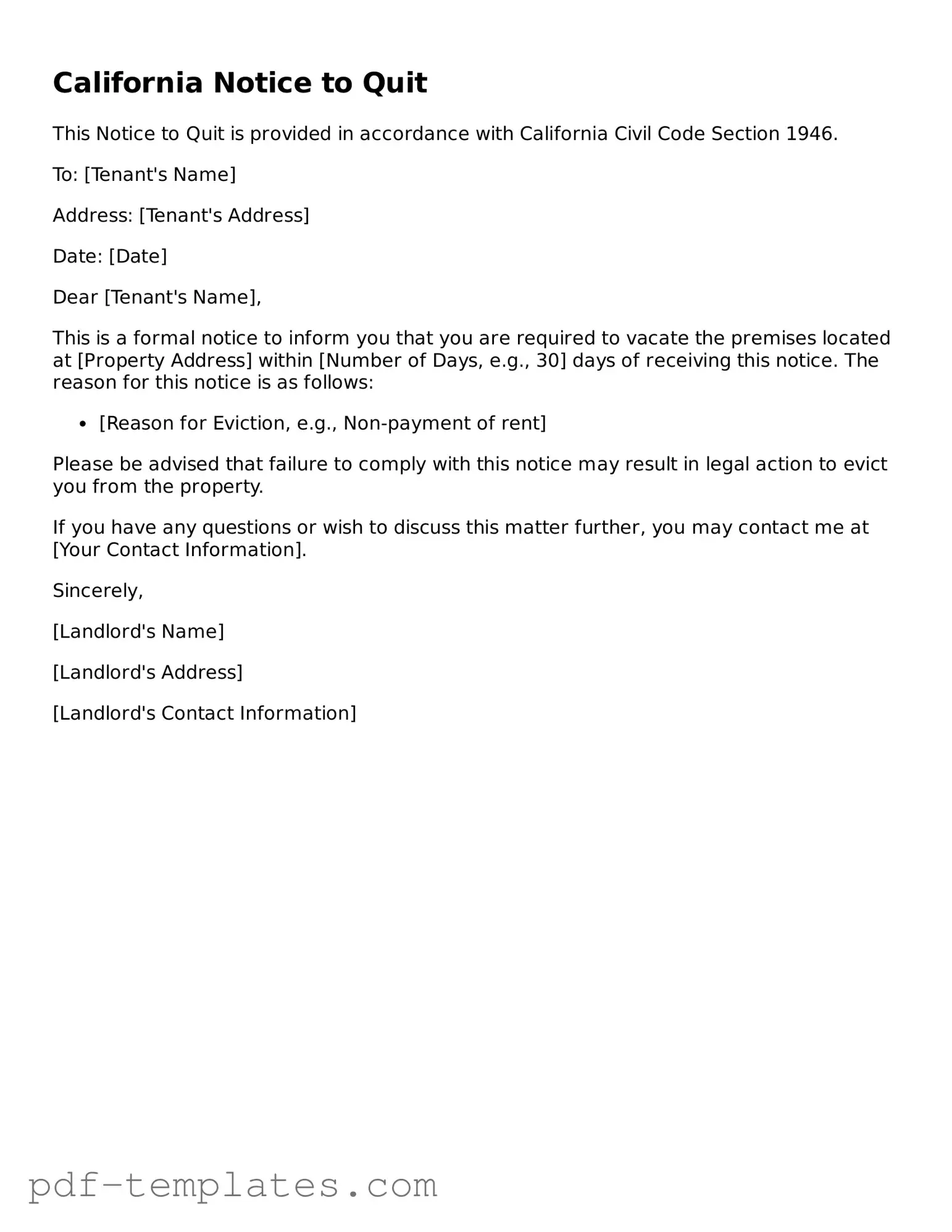The California Notice to Quit form is similar to the Eviction Notice, which serves as a formal communication from a landlord to a tenant, indicating that the tenant must vacate the property. Both documents outline the reasons for the eviction, whether it's due to non-payment of rent or violation of lease terms. The Eviction Notice typically provides a specific timeframe for the tenant to leave, mirroring the urgency conveyed in the Notice to Quit.
Another document akin to the Notice to Quit is the Lease Termination Letter. This letter is often used when a landlord or tenant decides to end a rental agreement. Like the Notice to Quit, it informs the other party of the intention to terminate the lease and specifies the final date for vacating the premises. Both documents aim to clarify the end of the tenancy and ensure that all parties are aware of their obligations.
The 3-Day Notice to Pay Rent or Quit is also quite similar. This notice is issued to tenants who have failed to pay rent on time. It provides a clear deadline for the tenant to either pay the overdue rent or vacate the property. The urgency of this notice aligns closely with the Notice to Quit, as both documents require prompt action from the tenant.
In understanding the various legal documents involved in landlord-tenant relationships in California, it is essential to recognize that attorneys often require specific forms to ensure compliance with state regulations. For those interested in additional resources related to California forms, All California Forms serves as a comprehensive guide for accessing necessary legal paperwork.
A 30-Day Notice to Terminate Tenancy is another related document. This notice is typically used for month-to-month rental agreements, allowing either party to terminate the lease with a 30-day notice. Similar to the Notice to Quit, it serves as an official notification to vacate, but it provides a longer timeframe for compliance, reflecting different lease arrangements.
The Notice of Non-Renewal is also comparable. This document is sent by a landlord to inform a tenant that their lease will not be renewed at the end of its term. Like the Notice to Quit, it clearly communicates the need for the tenant to vacate the property, but it usually occurs at the end of a lease rather than in response to a violation.
The Cure or Quit Notice is another document that shares similarities with the Notice to Quit. This notice is given to tenants who have violated lease terms, allowing them a chance to remedy the situation or face eviction. Both documents emphasize the need for the tenant to take immediate action, reinforcing the seriousness of the violation.
A Rent Increase Notice can also be seen as similar in its purpose of communication. While it doesn’t demand the tenant vacate, it informs them of upcoming changes that may affect their decision to stay. Both documents require clear communication and set expectations for the tenant, ultimately impacting their living situation.
The Notice of Lease Violation is another document that parallels the Notice to Quit. This notice outlines specific breaches of the lease agreement, giving the tenant an opportunity to correct the issue. Both documents serve as a formal way to address problems within the landlord-tenant relationship and require the tenant to take action.
The Notice of Default is also related, particularly in contexts involving mortgages. While it primarily addresses homeowners, it functions similarly by notifying the borrower of their failure to meet obligations. Both documents highlight the seriousness of the situation and call for immediate action to avoid further consequences.
Finally, the Notice of Abandonment can be compared to the Notice to Quit. This document is issued when a landlord believes that a tenant has abandoned the property. Like the Notice to Quit, it serves to clarify the landlord's intentions and the need for the tenant to respond, though it typically arises in different circumstances.
